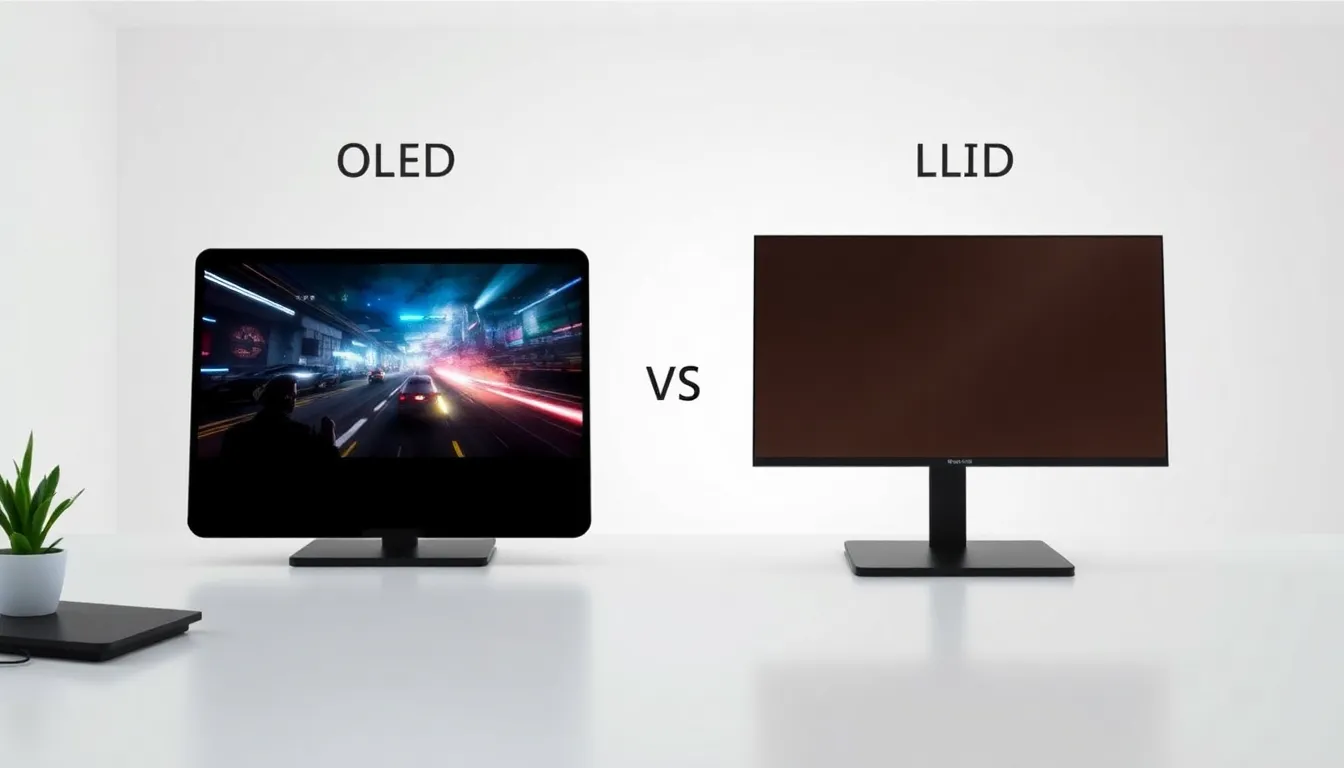Table of Contents
ToggleIn the world of handheld gaming, the display is king. When it comes to the Steam Deck, choosing between OLED and LCD might feel like picking between pizza and tacos, each has its fervent fans. So, how do we decide which one reigns supreme? Let’s jump into the guts of these technologies and see how they stack up, with a sprinkle of humor along the way. You know, just to keep things lively.
Understanding Display Technologies

What Is OLED?
OLED, or Organic Light Emitting Diode, is a display technology that lights up pixels individually. This means when a pixel is black, it’s actually turned off, leading to spectacular black levels and contrast. It’s like having a black hole in your living room, where light goes to die. This technology also allows for vibrant colors and quick refresh rates, all while being more flexible than a gymnast on a sugar rush.
What Is LCD?
LCD, or Liquid Crystal Display, takes a different approach. It relies on backlighting: liquid crystals filter light to create images. Picture a well-organized army of lights behind a frosted glass. While LCDs can produce good color representation, they can struggle to achieve the same depth of blacks that OLEDs flaunt. Think of them as the dependable cousin: reliable but not quite the showstopper at family gatherings.
Comparing OLED and LCD Performance
Color Accuracy and Brightness
When it comes to vibrancy, OLEDs often take the crown. They can display a broader color gamut, leading to richer hues and deeper contrasts. Picture your favorite game environment lit up like a holiday parade, every detail pops, and you feel like you’re in the thick of the action. On the flip side, LCD panels have improved over the years, yet they can’t quite keep up with that dazzling color richness.
Response Time and Refresh Rate
Speed is crucial in gaming. OLEDs, with their individual pixel control, generally have faster response times, minimizing motion blur. Imagine a racing game where every frame counts. Like quicksilver, OLEDs leave LCDs trailing behind, LCDs, but, hold their own with decent refresh rates, just not on the same superstar level.
Viewing Angles and Contrast Ratios
Viewing angles can make or break a gaming session, especially if your friends want to crowd around to watch your latest conquest. OLED screens typically offer excellent viewing angles, keeping colors vibrant no matter where you’re standing. In contrast, LCD displays can experience color fading when viewed from an angle. It’s as if some of the magic simply disappears. Plus, contrast ratios are where OLED shines: they deliver stunning depth because of the perfect blacks they can achieve.
Battery Life and Power Consumption
Power consumption is the elephant in the room, especially for handheld devices like the Steam Deck. OLEDs tend to be more efficient when displaying darker images since they turn off individual pixels. If you’re playing a horror game filled with shadows and suspense, your battery might just thank you for choosing OLED. LCDs consume a steady amount of power regardless of what’s on the screen, making them a bit of a battery hog in comparison.
Impact of Display Technology on Gaming Experience
The differences in display technology extend far beyond specs. An OLED display enhances immersion, making every detail pop on screen. It’s like diving headlong into a vibrant art piece rather than merely playing a game. Conversely, while LCDs provide solid visuals, they can feel a bit flat in comparison, like watching a movie through a foggy window. Gamers want to lose themselves in their gaming world, and the right display can dramatically enhance that experience.







